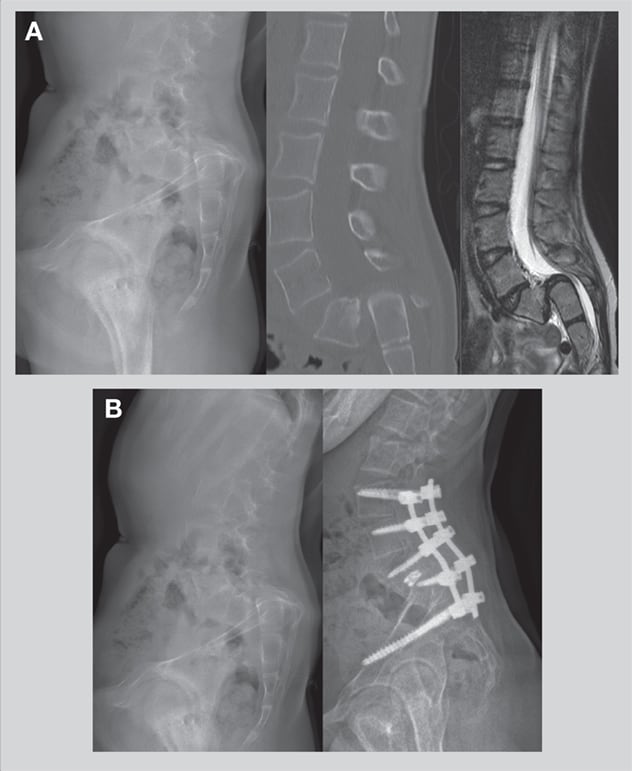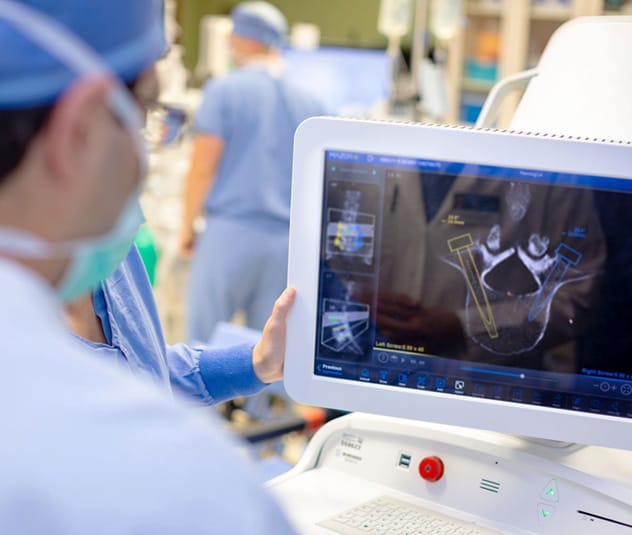Sept. 05, 2019
Spinal surgery using new robot-guided technology

Spinal surgery using new robot-guided technology
Mohamad Bydon, M.D., a neurosurgeon at Mayo Clinic in Rochester, Minnesota, leads a team performing spinal surgery using new robot-guided technology.
Mayo Clinic in Rochester, Minnesota, was the first center in the upper Midwest to perform spinal surgery using the latest robot-guided technology. The system, which incorporates advanced software to enhance surgical precision, is also available at Mayo Clinic's campuses in Arizona and Florida.
"Our team at Mayo Clinic has performed more than 20 spinal robotic surgeries since acquiring the system in fall 2018, with positive results thus far," says Mohamad Bydon, M.D., a neurosurgeon at Mayo Clinic's campus in Minnesota. "Even at this early stage, it is clear that robotic technology can make spinal surgeries safer and more efficient, and result in better outcomes."
Mayo Clinic spent almost two years studying various systems before committing to the new technology, which is currently used for surgery in the thoracic and lumbar spine.
The basis of robotic spine surgery is navigational software that was partly developed at Mayo Clinic. Mayo is collecting data from its use of the new system to further develop the technology, in conjunction with the manufacturer.
"Having a robust database from all three of our campuses will allow us to help advance this technology," says Selby G. Chen, M.D., a neurosurgeon at Mayo Clinic in Jacksonville, Florida.
Accuracy, efficiency and safety
Spinal hardware inserted during L4-S1 transforaminal lumbar interbody fusion

Spinal hardware inserted during L4-S1 transforaminal lumbar interbody fusion
Postoperative X-rays show spinal hardware inserted during a robot-assisted, minimally invasive L4-S1 transforaminal lumbar interbody fusion performed at Mayo Clinic in Jacksonville, Florida. The patient was a 74-year-old man who previously underwent right-sided L4 and L5 foraminotomies for right lower extremity weakness without significant benefit. The minimally invasive fusion greatly improved his leg strength.
The new system's major benefit is greater precision in the placement of hardware during spinal surgery. CT or fluoroscopic imaging before and during surgery help determine the path used by the robot at every level of the spine.
"The system's software guides the robotic arm into position during surgery. In that way the surgical plan is translated to trajectory guidance in the surgical field," Dr. Bydon says. "The accuracy achieved with the system has been excellent. In addition, the disruption to tissue has been less than we would normally see. We've noted that patients have less postoperative pain, lower use of pain medication and shorter hospitalization."
One of the first patients to undergo surgery with the new system had spinal instability and spondylolisthesis in addition to severe spinal stenosis. He underwent successful robotic surgery and has experienced an excellent outcome to date.
Trajectory guidance in the surgical field

Trajectory guidance in the surgical field
Sophisticated software translates the surgical plan into trajectory guidance in the surgical field.
Advanced software distinguishes the new system from previous technology. Mayo Clinic's data will be used to refine the software and further improve the system.
"Currently, the robot's primary utility is with the placement of spinal instrumentation. But as the software becomes more sophisticated, I imagine the robot will be able to assist us in other parts of the surgery, including bone work, disk preparation and potentially even deformity correction," Dr. Chen says.
"Software has the ability to change how we do surgeries in the future," Dr. Bydon adds. "Our team at Mayo Clinic is at the forefront of that effort. Bringing robotic technology into the operating room can make spinal surgery safer and more reproducible, to benefit more patients."
The Patient Experience at Mayo Clinic
All three Mayo Clinic campuses use the latest robot-guided technology for thoracic and lumbar spinal surgery, when appropriate. Learn more about what patients experience with robot-guided spinal surgery at Mayo Clinic.
For more information
Robotic-assisted spinal surgery improves outcomes. Mayo Clinic.